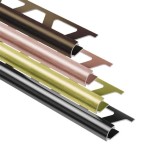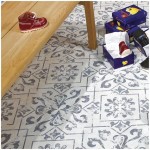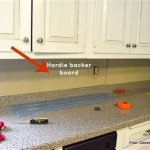How to Install Drop Ceiling Tiles in a Basement Floor
Installing a drop ceiling, also known as a suspended ceiling, in a basement offers numerous benefits, including concealing unsightly ductwork, pipes, and wiring, improving acoustics, and providing easy access for maintenance. While drop ceilings are typically installed overhead, this article will focus on an unconventional approach: installing drop ceiling tiles on a basement floor. This novel approach can be employed for specific purposes, such as creating a level surface over uneven concrete, providing a comfortable, insulated floor in select areas, or establishing a unique aesthetic. This process requires careful planning, preparation, and execution to ensure a stable, functional, and visually appealing finished product. This article provides a comprehensive guide to installing drop ceiling tiles in a basement floor.
Before embarking on this project, it is crucial to assess the existing basement floor and define the scope of work. The suitability of drop ceiling tiles for a floor installation hinges on several factors, including the floor's condition, intended use of the space, and the desired aesthetic. Traditional drop ceiling tiles are not designed for foot traffic and therefore require a robust support structure and a protective surface layer. This method is better suited for areas with light traffic or for creating raised platforms for specific purposes, rather than covering the entire basement floor.
Key Point 1: Planning and Preparation
Successful installation begins with meticulous planning and thorough preparation. This stage involves assessing the basement floor, selecting appropriate materials, and establishing a precise layout.
Assessing the Basement Floor: The initial step involves a comprehensive inspection of the existing basement floor. Identify any irregularities, such as cracks, dips, or unevenness. The floor must be structurally sound and able to support the weight of the drop ceiling grid and tiles, as well as any anticipated load. If significant repairs are necessary, address them before proceeding. Ensure the floor is clean and free of debris, dust, and moisture. A thorough cleaning with a suitable cleaner and allowing sufficient drying time is essential.
Selecting Suitable Materials: The choice of materials is critical for the success and longevity of the flooring. Unlike standard ceiling installations, greater consideration must be given to the load-bearing capacity and floor-specific durability. * Drop Ceiling Tiles: While standard mineral fiber tiles are generally not suitable for direct floor use due to their fragility, reinforced or specialized tiles designed for floor applications are available. These tiles are typically denser, more durable, and often feature a protective coating. Consider tiles with a high load-bearing capacity and resistance to moisture. * Grid System: The grid system forms the support structure for the tiles. Select a heavy-duty grid system made of galvanized steel or aluminum for increased strength and corrosion resistance. Choose a grid height that allows sufficient clearance for any existing obstructions on the floor and provide adequate space for leveling. * Leveling Shims: Leveling shims are essential for creating a perfectly level surface, especially if the existing basement floor is uneven. Select shims made of durable, moisture-resistant materials such as plastic or composite. * Fasteners: Use appropriate fasteners to secure the grid system to the basement floor. The type of fastener will depend on the floor material (concrete, wood, etc.). Concrete anchors or construction adhesive are suitable for concrete floors, while screws or nails can be used for wood floors. * Protective Covering: A protective covering is crucial to protect the drop ceiling tiles from wear and tear. Options include interlocking rubber mats, carpet tiles, or a thin layer of concrete or epoxy coating. The choice will depend on the intended use of the space and the desired aesthetic.
Establishing a Precise Layout: Before installing the grid system, create a detailed layout plan. Determine the desired dimensions of the floor area to be covered and mark the perimeter on the basement floor. Consider the size of the drop ceiling tiles and plan the grid spacing accordingly to minimize tile cutting. Ensure that the grid lines are square and parallel to the walls. Use a laser level or a chalk line to establish accurate and consistent lines. The perimeter should be carefully measured and marked to ensure a clean and professional finish.
Key Point 2: Grid System Installation
The grid system provides the structural foundation for the drop ceiling tiles. Proper installation of the grid system is crucial for ensuring a level, stable, and durable floor.
Installing the Perimeter Angle: Begin by installing the perimeter angle along the walls. The perimeter angle provides support for the edges of the drop ceiling tiles. Attach the perimeter angle to the walls using appropriate fasteners, ensuring that it is level and securely fastened. Use a laser level to ensure consistent height around the perimeter. The perimeter angle should be installed at the desired height of the finished floor level.
Installing the Main Runners: The main runners are the primary support beams of the grid system. They are typically installed parallel to each other at specified intervals, depending on the size of the drop ceiling tiles. Measure and cut the main runners to the appropriate length. Position the main runners perpendicular to the perimeter angle and secure them to the floor using fasteners. Use leveling shims to ensure that the main runners are perfectly level. The spacing between main runners should be consistent and accurate to ensure proper tile support.
Installing the Cross Tees: Cross tees are shorter, perpendicular beams that connect the main runners and create the grid pattern. Measure and cut the cross tees to the appropriate length. Insert the ends of the cross tees into the slots in the main runners. Use leveling shims to ensure that the cross tees are level. The cross tees should be evenly spaced and securely connected to the main runners to create a rigid and stable grid system. The spacing is dictated by the size of the tiles chosen.
Leveling and Adjusting the Grid: After installing the entire grid system, carefully inspect it for levelness and stability. Use a spirit level and a laser level to check for any variations. Adjust the leveling shims as necessary to ensure that the grid is perfectly level. Reinforce any weak points in the grid system with additional fasteners or supports. The grid system should be rigid and stable before proceeding to the next step.
Key Point 3: Installing the Drop Ceiling Tiles and Protective Covering
With the grid system in place, the final step involves installing the drop ceiling tiles and applying a protective covering to create a functional and aesthetically pleasing floor.
Installing the Drop Ceiling Tiles: Carefully place the drop ceiling tiles into the grid system. Ensure that the tiles fit snugly and are properly aligned. For tiles that require cutting, use a sharp utility knife or a specialized tile cutter to create clean and precise cuts. Wear safety glasses and gloves when cutting tiles. Some tiles may require additional support, such as adhesive or clips, to prevent them from shifting or lifting. The tiles should be installed in a consistent pattern to create a uniform appearance.
Applying the Protective Covering: A protective covering is essential to protect the drop ceiling tiles from wear and tear. Interlocking rubber mats are a popular choice for providing a durable and comfortable surface. They are easy to install and maintain and offer good slip resistance. Carpet tiles are another option for creating a more aesthetically pleasing floor covering. They are available in a variety of colors, patterns, and textures. A thin layer of concrete or epoxy coating can be applied to create a seamless and durable surface. This option requires professional installation and may be more expensive. Select a protective covering that is appropriate for the intended use of the space and the desired aesthetic.
Securing the Protective Covering: Depending on the type of protective covering selected, different methods may be required for securing it to the drop ceiling tiles. Interlocking rubber mats and carpet tiles typically interlock or adhere to the tiles using adhesive. Concrete or epoxy coatings are typically applied directly to the tiles and allowed to cure. Ensure that the protective covering is securely fastened to the drop ceiling tiles to prevent shifting or lifting. Follow the manufacturer's instructions for installation and application. Properly securing the protective covering is crucial for ensuring the longevity and functionality of the floor.
Finishing Touches: After installing the drop ceiling tiles and protective covering, inspect the floor for any imperfections. Make any necessary adjustments or repairs. Clean the floor thoroughly to remove any dust or debris. Install baseboards or trim along the perimeter to create a finished look. The baseboards or trim should be securely fastened to the walls and should cover the edges of the drop ceiling tiles and protective covering. The finished floor should be level, stable, and visually appealing.
Installing drop ceiling tiles in a basement floor presents a unique approach to floor covering. By carefully planning, selecting appropriate materials, and following a systematic installation process, a level, insulated, and aesthetically appealing floor can be created. Attention to detail, proper leveling, and a suitable protective covering are paramount to ensure the long-term performance and durability of the installation.

How To Easily Install A Drop Ceiling Ron Hazelton

How To Install A Drop Ceiling Yourself

Drop Ceiling Tiles Installation Tips Diy Family Handyman

How To Install A Drop Ceiling

How To Install A Drop Ceiling 14 Steps With Pictures Wikihow

Ceilingmax Surface Mount Ceiling Grid Installation

How To Install A Drop Ceiling Diy For Beginners

Installing Woodhaven Planks And Hiding Drop Ceiling Grid Sawdust Girl

Diy How To Update Old Ceiling Tile Pink Little Notebookpink Notebook

How To Install Drop Ceiling Tiles For A Bathroom Diy Danielle
Related Posts








